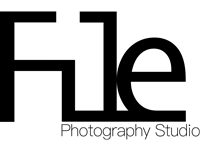Many photographers that focus on advertising and still life product photography use a Full Frame DSLR.
Αcknowledge, that they can not with this equipment exploit the possibilities that photographers previously used with Large Format technical cameras.
The great advantage of these cameras was that could move independently focal plane of the lens relative to the photosensitive surface of the film at the time. The front element of the lens can be moved up and down and side to side in a horizontal or vertical angle relative with to the back element that were the film, and is moved if necessary. These moves were designed to allow these cameras to correct on camera, the perspective distortion in architectural photography and in advertising photography gave the possibility of selective focus. For example you can on camera take pictures of a package and choose any part you want to sharpen more or blur in terms of Photoshop. In photographing jewelry - which is the area that interests me most - usually when we want a jewel to be focused all along , using the technique of Focus Stacking ( in most cases even with F 22 the result is not satisfactory because with so closed diaphragm the lens is not performing well ) in Photoshop, a technique which requires several shots, depending on the size of jewelry and is time consuming . With a technical camera can bring the level of focus of the lens parallel to the axis of the object being photographed and you can have perfectly focused jewelry, for example, with only one shot. The only disadvantage of this cameras was their price and their large size . The downside of the price no longer applies since you can find them on a fraction of their original price and relatively immaculate condition since they are machines that never leaves the studio.
Now, however, a great opportunity presents because of the digital age, the technical cameras are in approachable prices and most importantly can be combined with MFDB medium format digital backs . This gives the possibility to exploit the advantages of these movements of cameras without departing from the digital environments which we do most in recent years. For this purpose, special adapters are manufactured ,who combine a technical camera with a MFDB from another manufacturer. This creates a couple of old technical body and new digital back . This of course can occur because the size of digital backs is approximate sizes of the large format films, used by technical cameras. Due to the large sensor CCD, we can exploited and moves from the lens.
A problem occurs however, with this combination is the link of digital back to the technical body. Apart from the necessary adapter to allow the back to fasten on the technical body , need some wires that give the signal to digital back that the camera shutter is open and must record the shot. Modern digital backs , effectively acting like scaner, so when the camera has lifted the mirror and curtain , then you must synchronize the digital back to record the image through the lens. That exactly do these cables. Another practical problem of the combination is that there is no possibility for manual focus with the photographer's eye on the camera. This is because at the point where ( the rear of the machine ), served as a "view finder" is adapted digital back . This problem is solved by the function "live view" of modern DB via RAW Workflaw programs. Essentially watching the frame into live video and adjusts the focus of the camera looking at the computer screen . One important thing I failed to mention as " obvious " is that this combination of technical + MFDB works only Tehtered the digital back to a PC or Mac via USB cable or FireWire 400 - 800.
Thus the necessary components of the hybrid technical + MFDB are four:
- The body of the old technical camera and lenses.
- MFDB the medium format digital back
- The necessary adaptor, which is suitable for the combination of a specific model technical camera with a particular model of a digital back with the necessary sync cable.
- PC or Mac
- Regarding the technical body of the camera there are many manufacturers that still manufacture such machines and some manufacturing also digital backs for their cameras.
Some manufacturers large format cameras do know: Sinar, Cambo, Horseman.
Accordingly known manufacturers digital backs are: Phace One - Mamiya, Leaf, Hasselblad - Imacon, Sinar.
Continues with more information in the next post!

